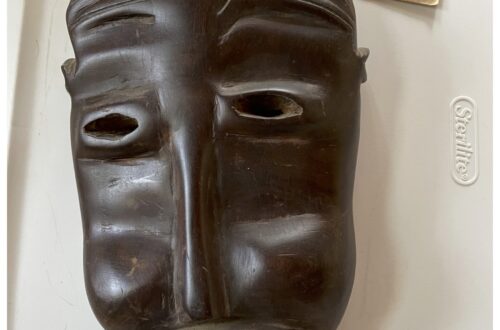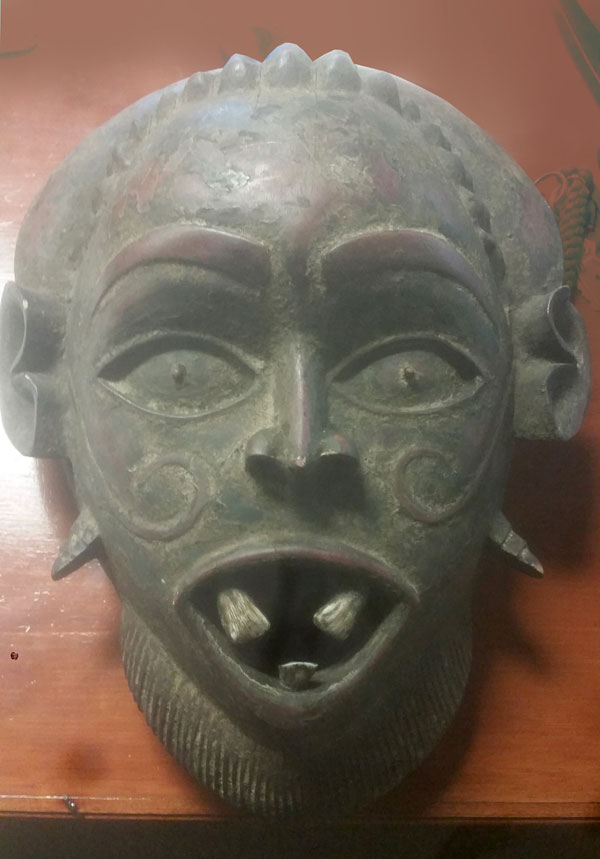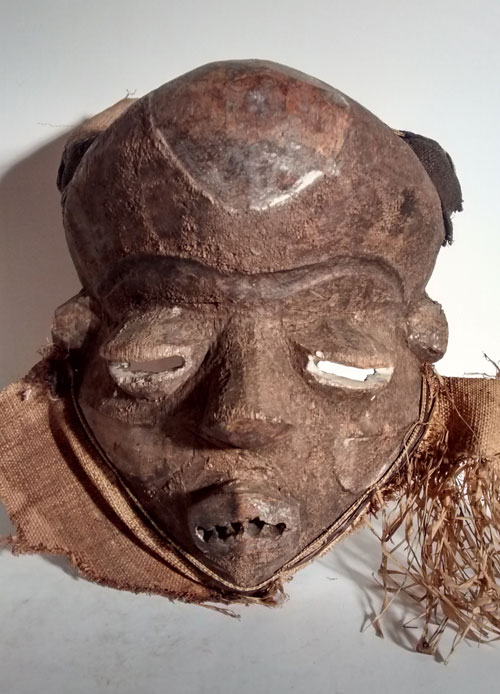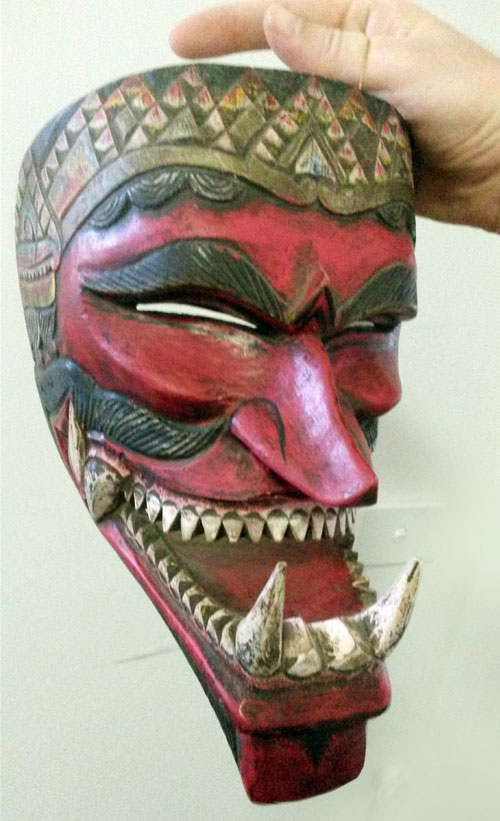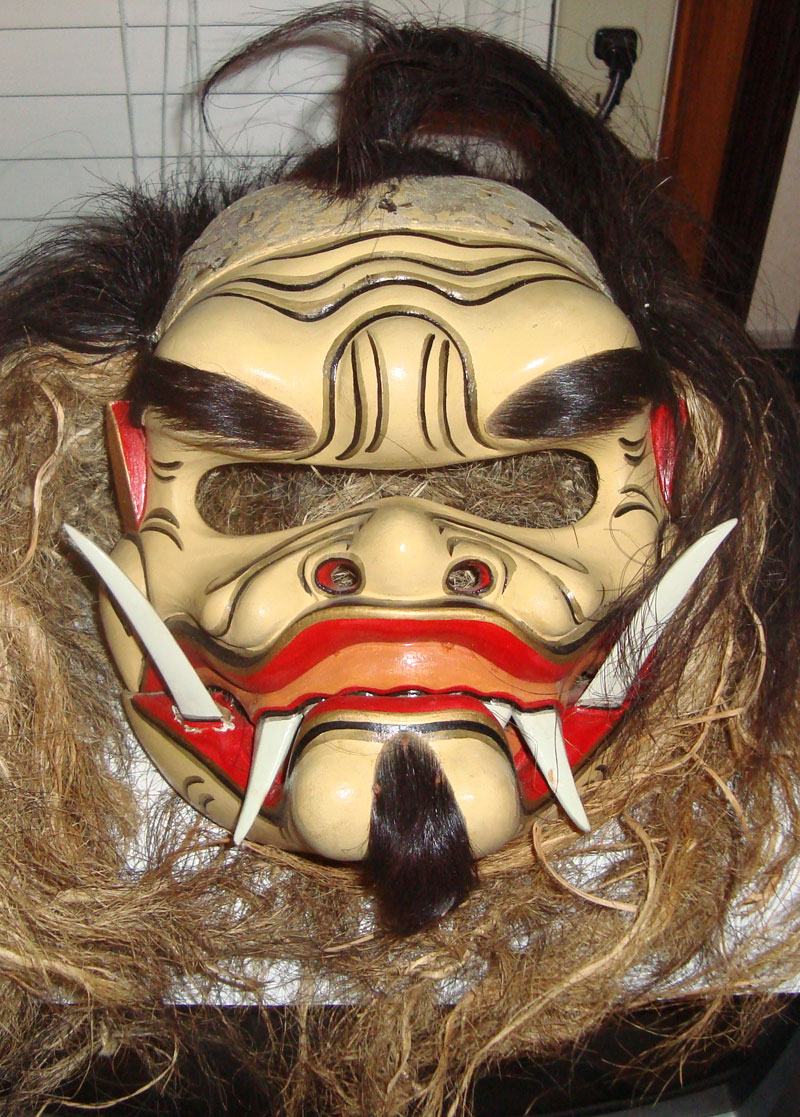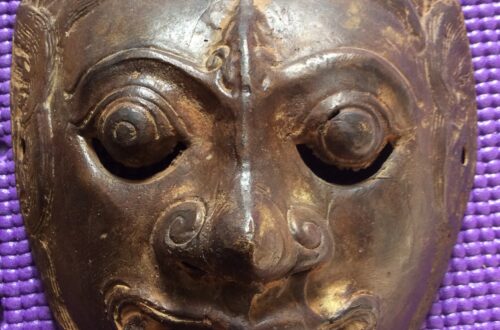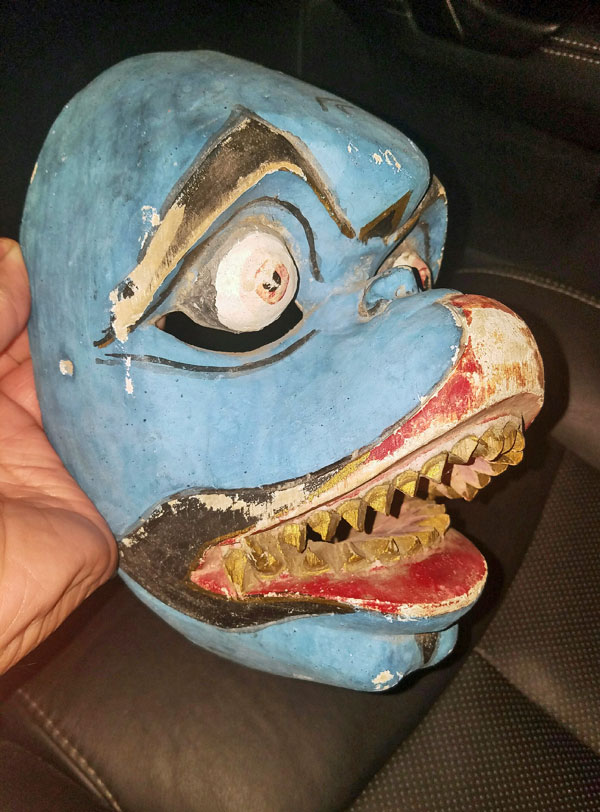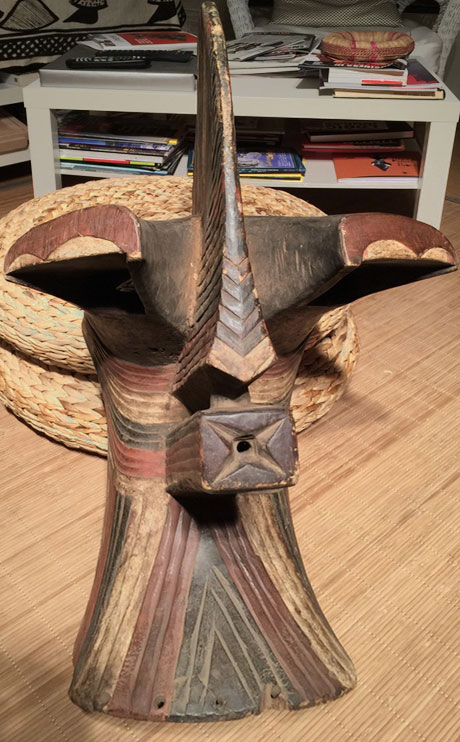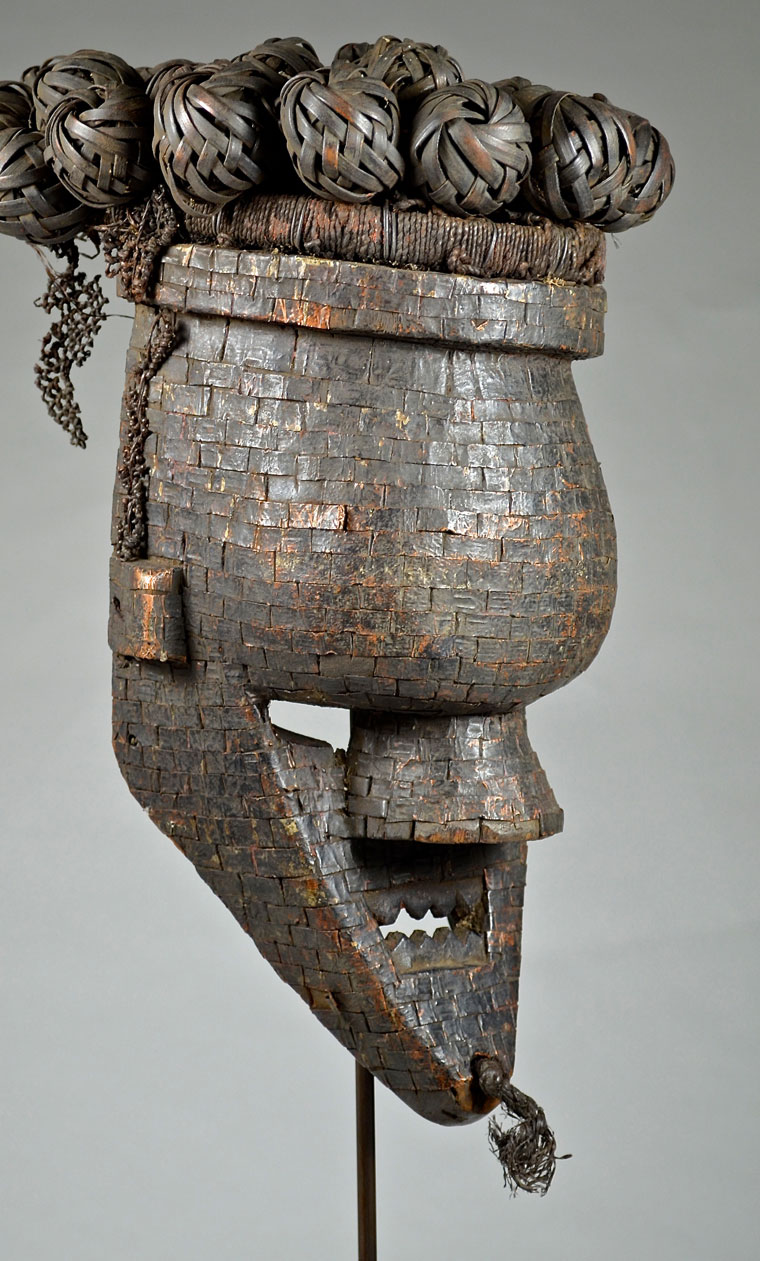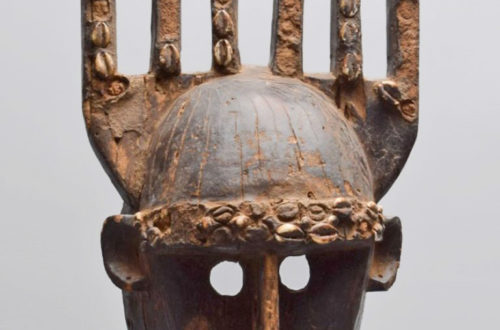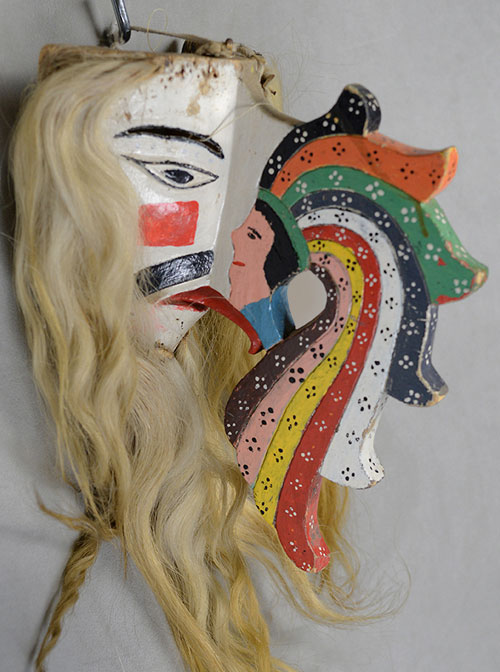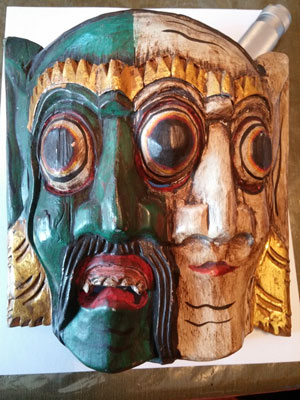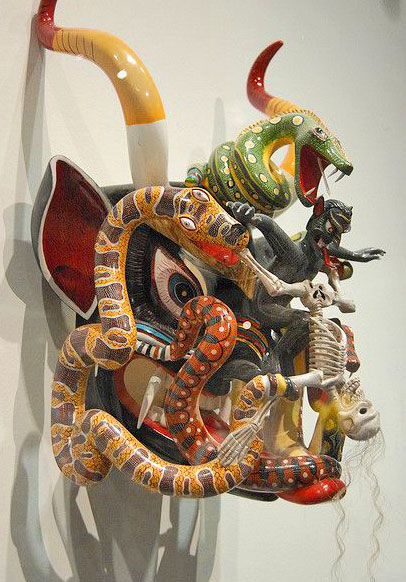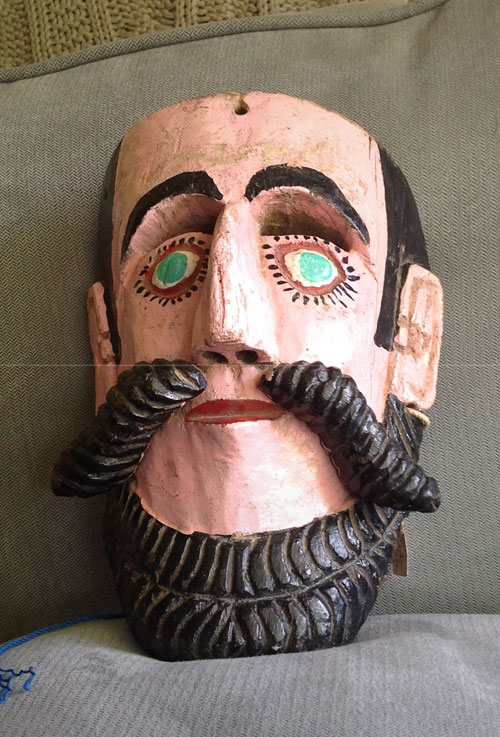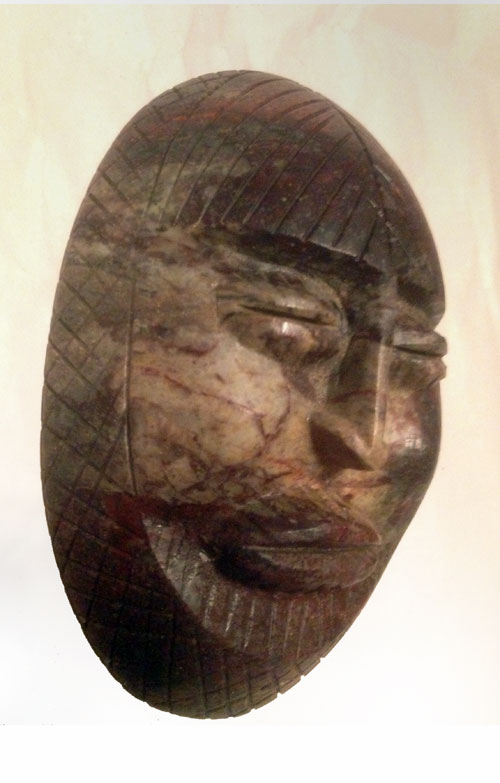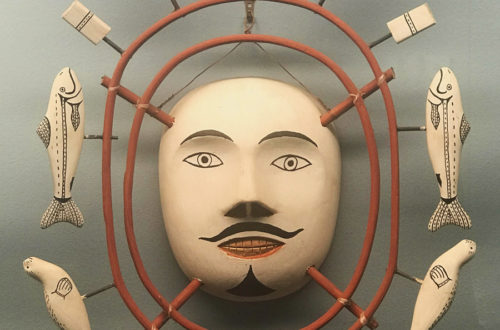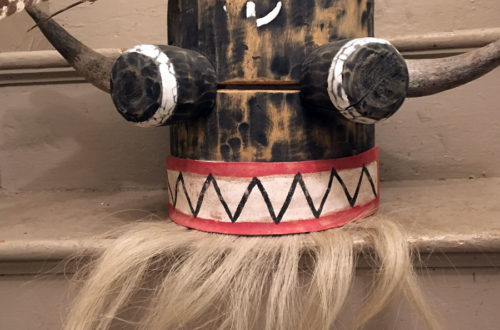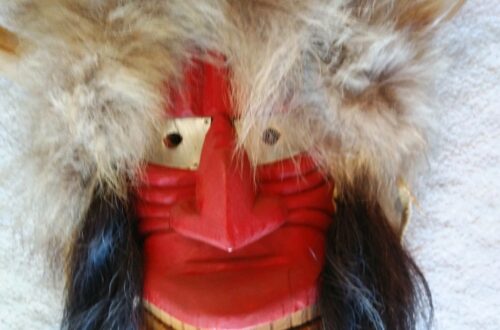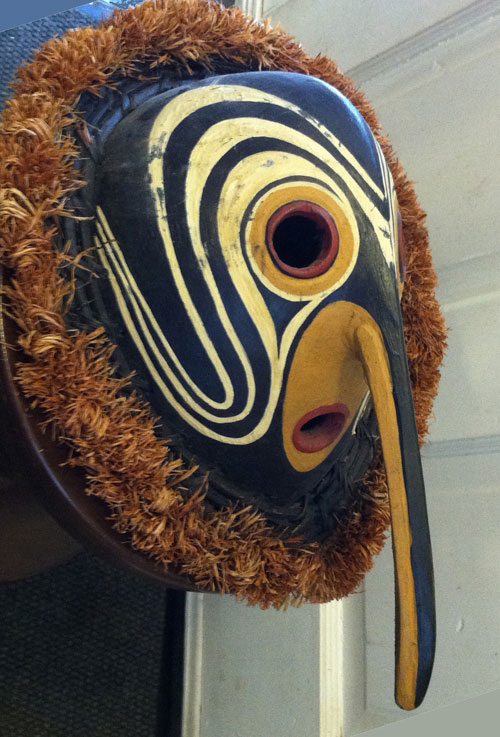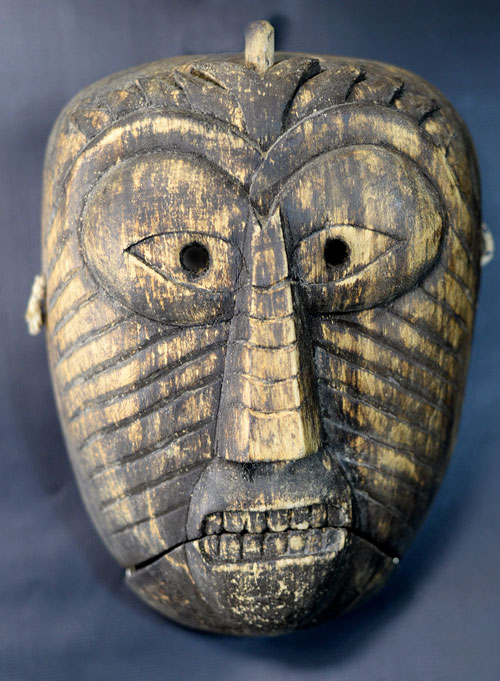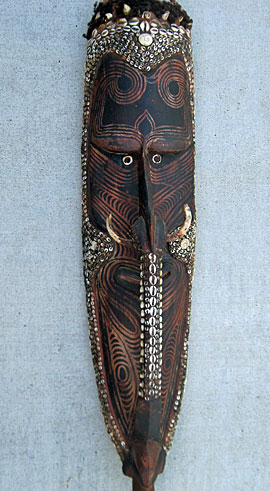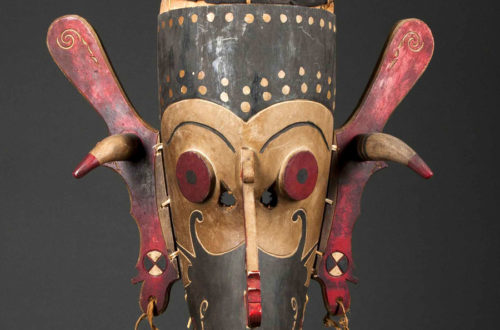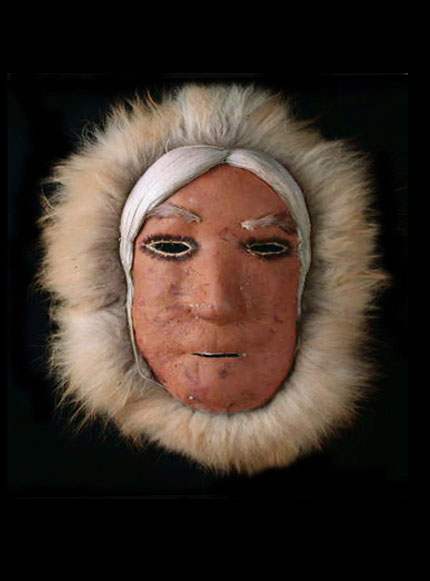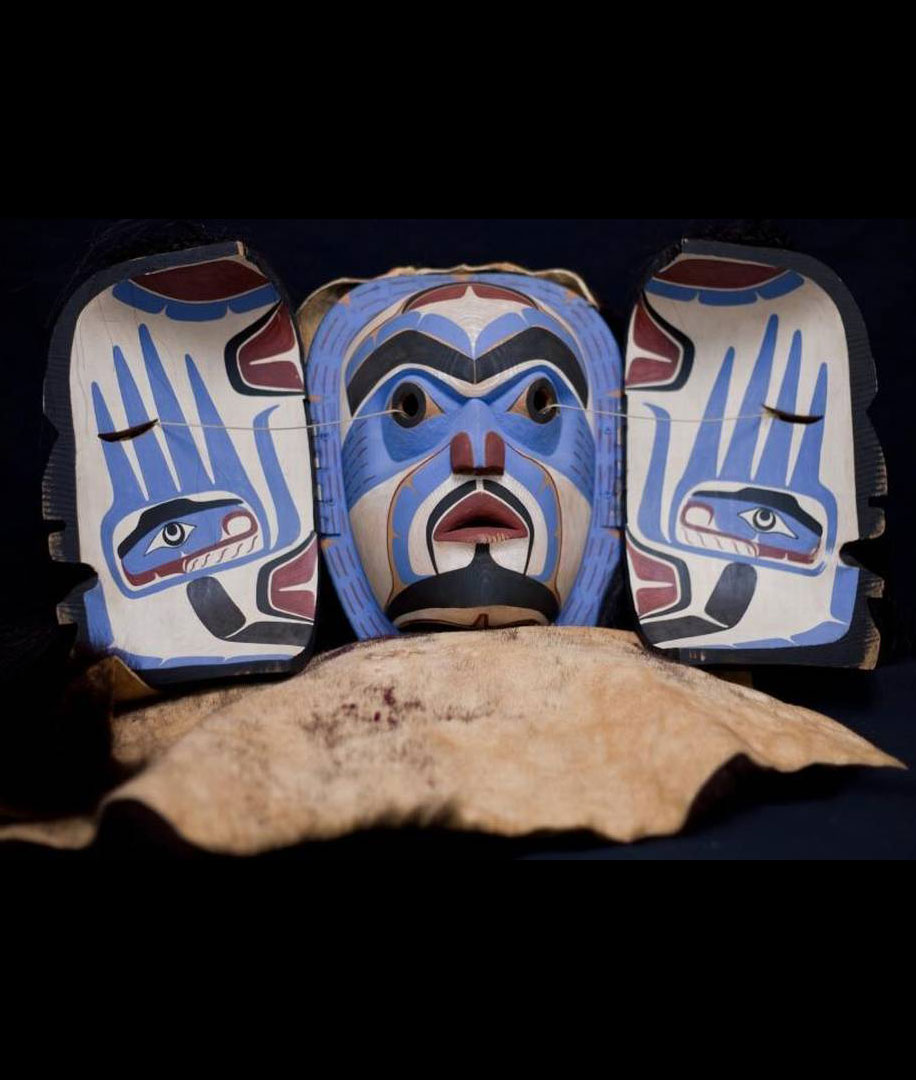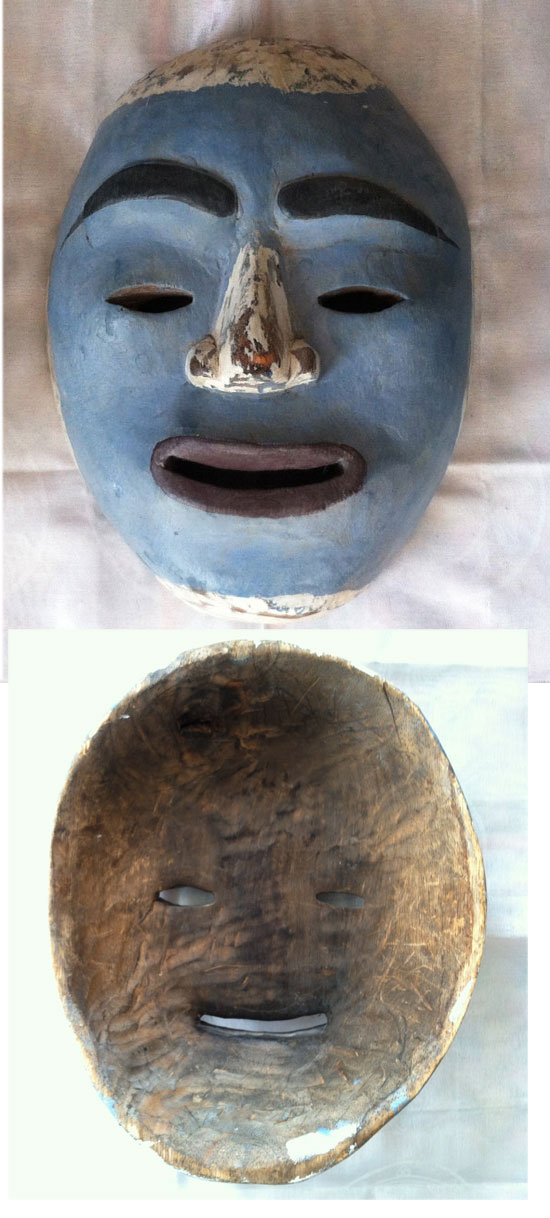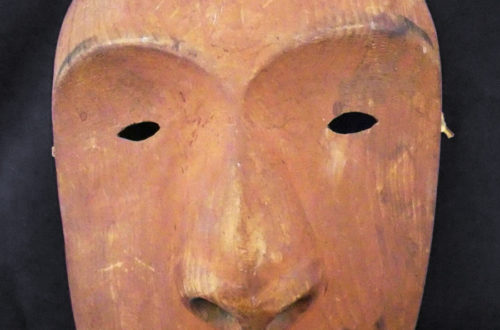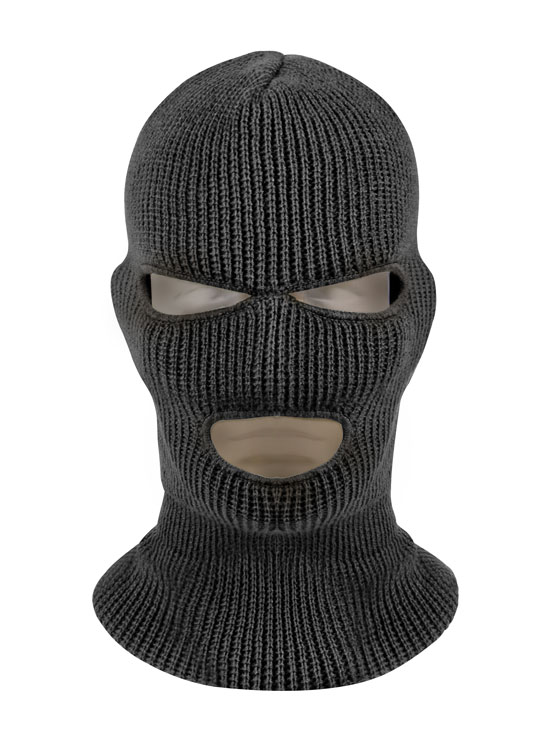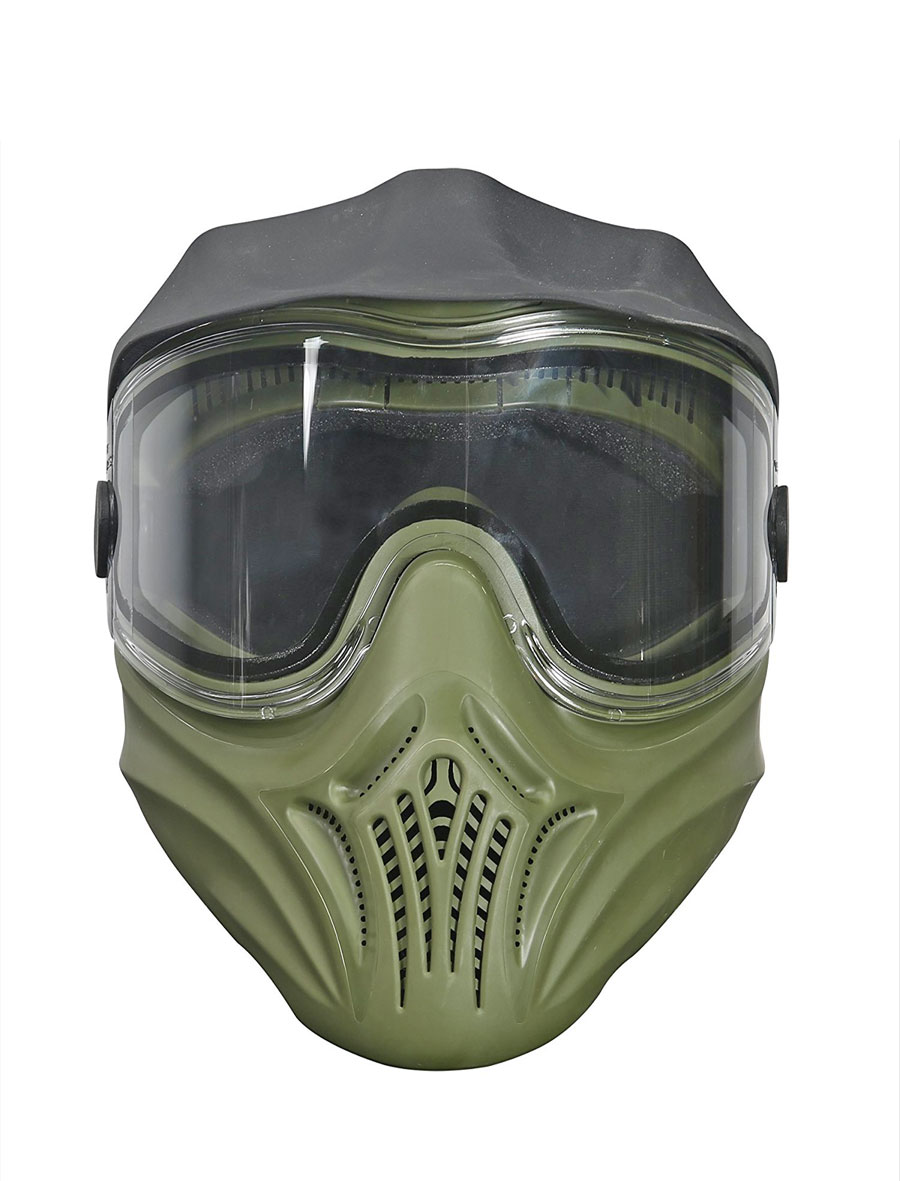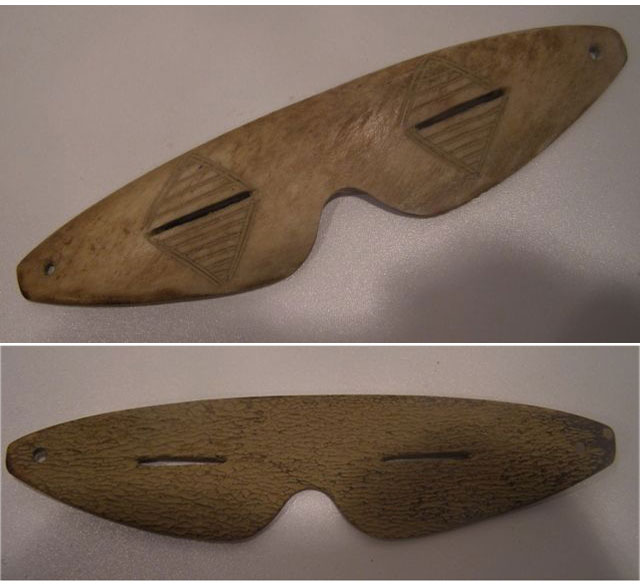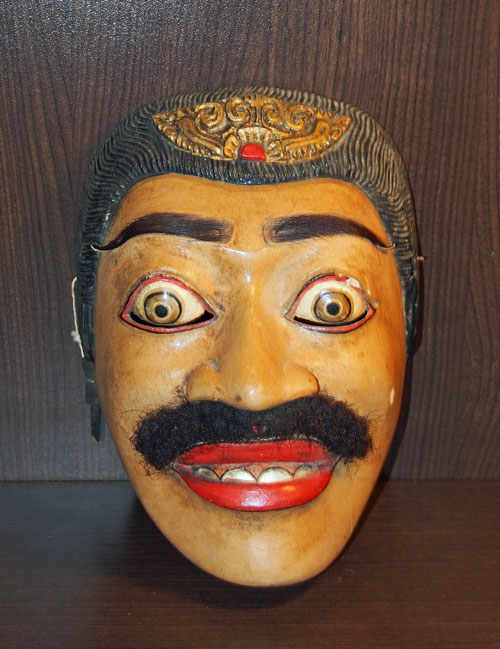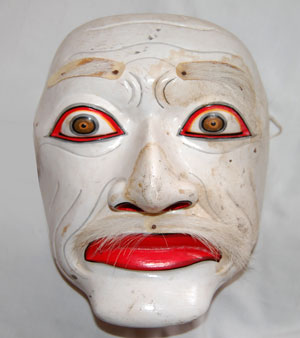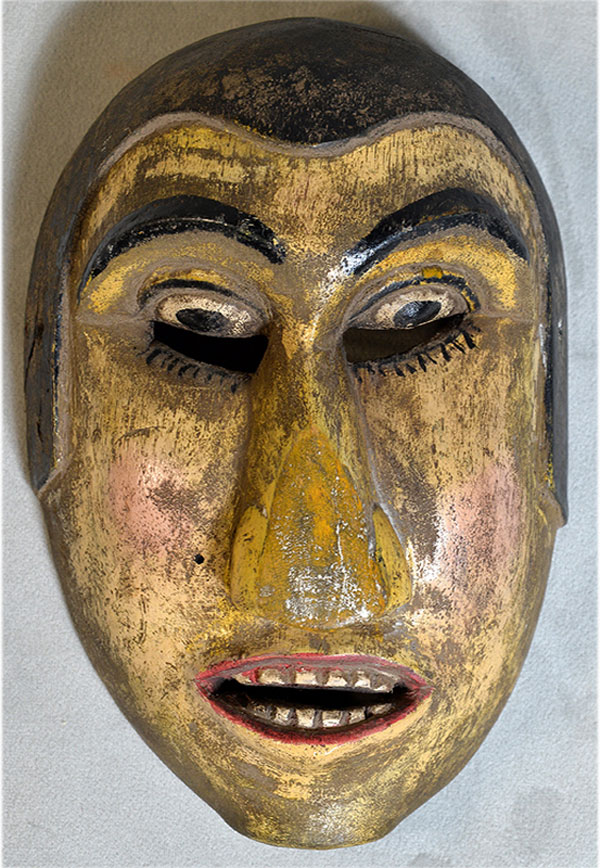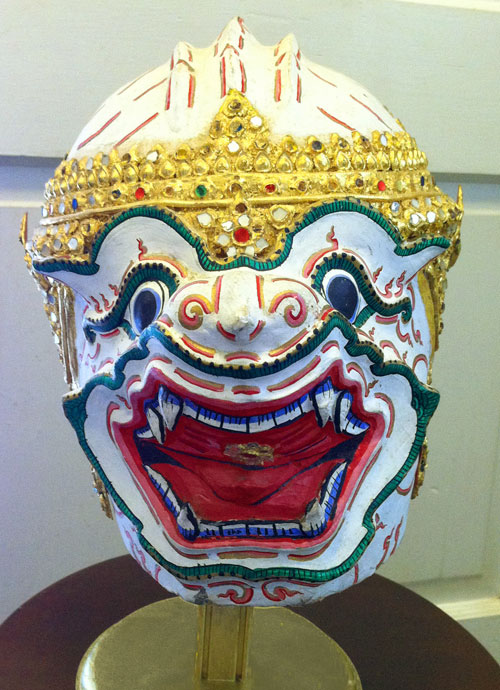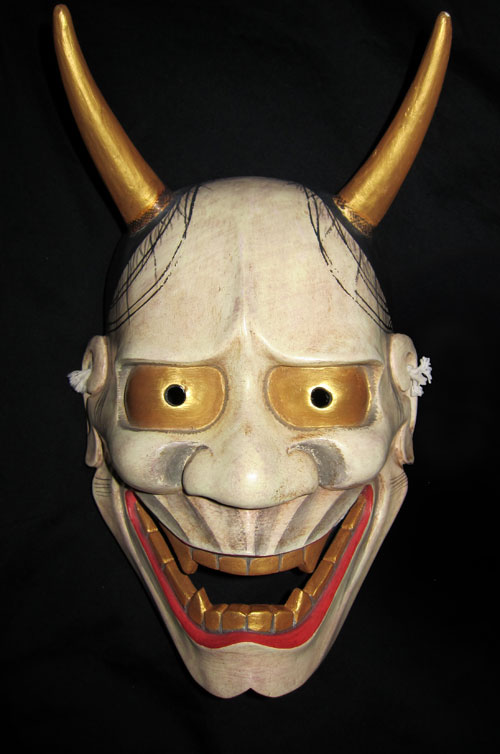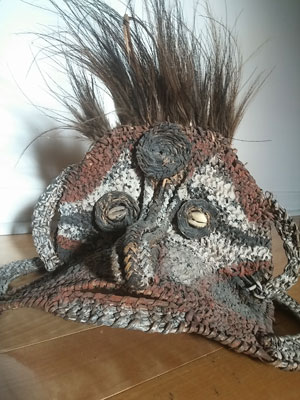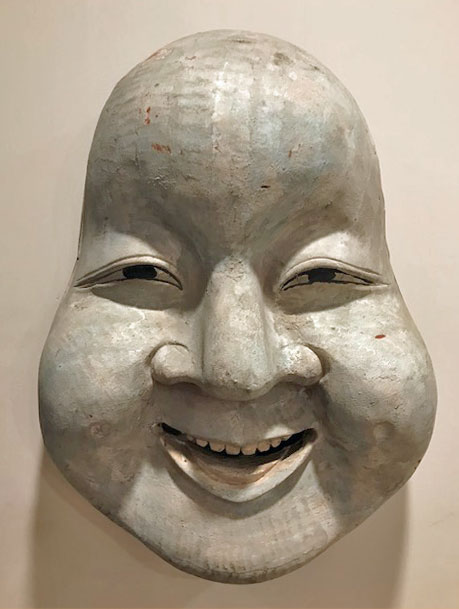Bob, In case you missed this. Herb http://www.cnn.com/2016/02/14/travel/cnnphotos-behind-the-masks-west-africa/index.html I’m so pleased that Herb sent us the link. Behind the Masks in West Africa is a beautiful collection of 10 carefully posed portraits of ordinary people wearing different masks. They were taken by Benazir Wehelie as a Special to CNN. I hope you enjoy this little show.
-
-
The dreaded Cakil from Java
Q: While in Yogyakarta last year, I spotted this Cakil topeng. After discovering the price tag, I spent a week looking for a similar mask of equal quality. Failing, I returned and paid 1.55 million Rupiah (after substantial haggling). A mark carved into the back is the emblem of the Sultan of Yogyakarta. The seller claimed it was at least 60 years old, likely more. An unrelated person recently told me the number of feathers on the wings of the crest indicate the mask was made during the reign of the seventh sultan. This would make it between 95 and 129 years old, but I can’t find anything to substantiate…
-
The Songye Kifwebe mask
Q: I bought this male Songye Kifwebe mask a month ago from a seller in Brussels. It is a huge mask of this type. At least the biggest I’ve ever seen: 77cmX31cmX51cm, W: 3,4kg. Are this big masks used in rituals, festivals? How old do you think it is? Thanks. Ricardo, 916 A: The Sonye people come from the Democratic Republic of Congo. Early accounts of their Kifwebe classified them as fetishes that function as caretakers. It is evident that the Kifwebe is a powerful social instrument probably associated with healing and rituals of mystical and transformational control. This highly abstracted design resembles nothing one would see in the real…
-
Azteca masks are amazing
Q: I acquired a few more masks in the last few weeks. The last is an Azteca mask from Danza de la Conquista in Veracruz. I’m sure you’ll recognize it. I won that at an auction along with 2 diablo con chintetes masks from Guerrero, which I’m going to sell. Enjoy! Aaron, 915 A: We are so lucky that Aaron continues to share his great finds with us. This is one of the most extraordinary dance masks from Mexico. Or anywhere for that matter. Look at that amazing protrusion comming out of the face! A similar Azteca is shown and described on page 124 of our new book, Masks of…
-
Inuit small stone mask
Q: I purchased this small mask carved in some type of marbled stone at an antique market in Pickering, Ontario, Canada. It is about 5-1/2″ X 3-1/2″. I paid $85.00 for it. I have no idea whether there is any real value to the piece. I have been collecting interesting masks over the years and I just could not resist this one. Curious to know if you might know thew cultural origin…and if in fact there is any value? Mo, 914 A: A lot of small stone sculptures are made by the Inuit of Alaska. Perhaps some of the First Nations people of northern Canada do the same. The question…
-
Modern Mosquito Mask
Q: I was wandering around a Goodwill “end of the rode” store, where items are priced by weight! They were pushing large carts filled with ephemera towards the center of the store. People always make a wild dash to be the first one at the bins!! I waited until everyone had gone to another bin….and I found this mask. It cost me $1.99! The mask is very light wood and reminds me of the Northeast masks of Canada. Any ideas about it would be appreciated. Regardless of it’s origins…I love it. Mickey, 913 A: You can’t beat that price. Well made tourist masks, wherever they come from, cost more than…
-
Could be colder in Alaska
The wind chill here in Lancaster, PA will go below 0 degrees Fahrenheit tomorrow. Made me think of a mask on page 92 of our new book, Masks of the World. It’s a shaman mask made by the Inuit people of Simon Paneak, Alaska. It is constructed of natural materials, mostly from caribou. Though it may or may not have some ethnographic basis, they have always been made by the Inuit for trade with visitors.
-
The balaclava can be scary
Though this website deals mostly with ethnographic masks from cultures all over the world, we occasionally see masks used for protection and other purposes. A few people, like yours truly, enjoy collecting them as well. In our new book, Masks from Around the World, chapter 13 is called “Protection & Protest” and the next one is “Steampunk & Sex.” This mask is on page 173 with the following description. 958 Balaclava The 3-holed black balaclava was designed as full cold-weather protection for the head. During the Crimean War in 1854 handmade balaclavas were sent over to the British troops to help protect them from the winter weather. Today they are…
-
A great storage unit story
Q: The storage unit I got these masks from was appraised at $30,000-50,000. I did not buy the unit for that amount They did except my offer. The unit contained more than masks. Also Art, Paintings, Books, Jewelry, Ect. Apparently the man that had the collection passed away, was a Librarian for 40 years. Never married, traveled the world. went to some tribes personally, and liked the signatures too. Kathleen, 910 A: Kathleen sent pics of a number of masks found in the treasure trove. All of them are quite interesting. Lucky her! This could be one of several male characters in the famous Topeng dance drama of Bali. Wonderful…
-
Khon mask for Thai dancers
Q: I bought this mask 5 or 6 years ago in Vermont in a small shop owned by an elderly gentlemen. He told me he brought it back with him shortly after WW11 in which he served. Mask reminded me of the dancers in the King and I movie. I paid $20 for it. I would like to know if it is a Khon dance mask from Siam and its approximate age. Mickey, 909 A: It is from Siam, or what is now called Thailand in SE Asia. This is a classic Khon dance mask made out of strong papier mache and carefully detailed with paint and spangles. Often they…

